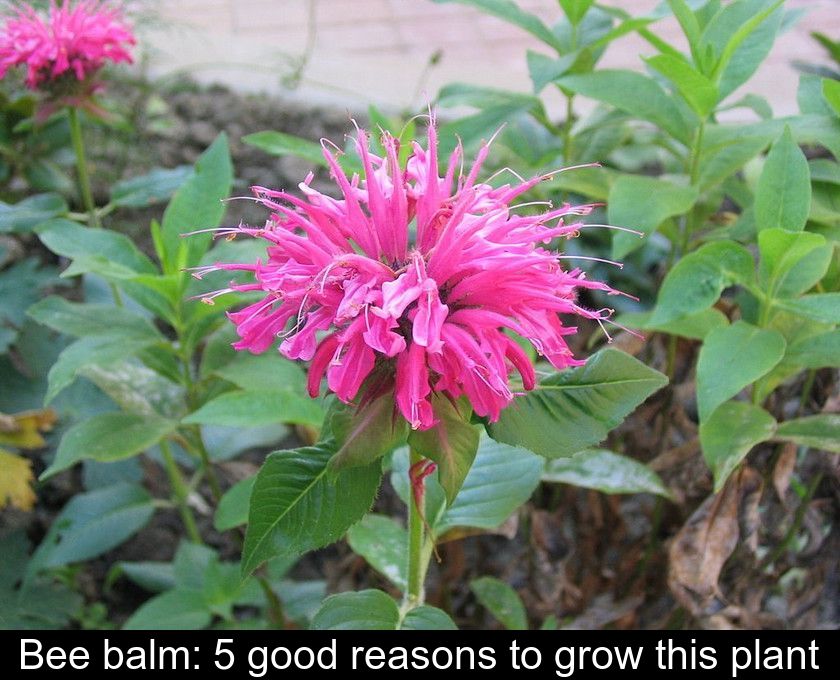Bee Balm: 5 Good Reasons To Grow This Plant
Beautiful perennial native to the United States, bee balm is an essential plant in gardens and on balconies during the summer. Not only does it provide abundant and highly decorative blooms throughout the season, but it also helps repel mosquitoes! As a bonus, this aromatic plant can also be used in cooking and has medicinal properties.
1- The bee balm offers a beautiful colorful bloom.
The bee balm or Monarda didyma is a perennial herbaceous plant from the Lamiaceae family. It is native to North America.
This lovely bushy plant is appreciated for its summer blooming, which is colorful and very generous. It also has dense, aromatic foliage with a lemony scent.
Its flowers are scarlet red and have a tousled pompom shape, earning the plant the nickname "devil's hair." There are also hybrid varieties with white, pink, or mauve flowers.
2- The bee balm is easy to grow.
Bee balm is a hardy and easy-to-grow plant. It accepts almost any soil but prefers a cool, rich, and well-drained soil. It is quite resistant to drought and cold.
You can plant it equally well in full sun or partial shade, especially in hot regions. It is best planted in spring, keeping a distance of about 30 cm between each plant. Plan to plant until May to enjoy a summer without mosquitoes or bites!
This plant multiplies easily by dividing clumps in early spring or autumn. Maintenance is limited to cutting back the plant after flowering when the leaves and flowers are completely wilted.
Note: This perennial, which blooms from June to the end of July, looks stunning in summer flower beds when combined with yarrow, black-eyed Susans, speedwell, and cornflowers.
3- The bee balm repels mosquitoes.
The bee balm has another major advantage in the summer: it repels mosquitoes as effectively as a commercial repellent spray, without the insecticide's toxicity! Fans of natural mosquito solutions are well aware of repellent plants like citronella, peppermint, lavender, and basil.
The wild bee balm, also known as wild bergamot, is a lesser-known anti-mosquito plant in France. And yet, it is said to be even more effective due to its lemony scent. If you don't want to banish all insects from your garden, rest assured! Mosquitoes dislike this perennial plant, but other pollinating insects like bees and butterflies love its nectar and fragrance.
4- Bee balm is edible.
Another good reason to adopt it: the bee balm is an edible plant that can be used both in cooking and as an infusion. Its fresh, chopped flowers and leaves serve as a condiment on raw vegetables or salads.
Once dried, they can be consumed as herbal teas. This plant is also called "Pennsylvania tea" or "Oswego tea" (named after a Native American tribe).
5- The leaves of monarda have medicinal properties.
Finally, bee balm has medicinal properties because its leaves contain thymol with antiseptic properties. The dried leaves are said to be effective against colds when inhaled and against nausea and digestive disorders when infused.
Note: Bee balm leaves can be harvested after about a year. It is recommended to pick them throughout the growing season, dry them, and store them in airtight jars in the shade.






